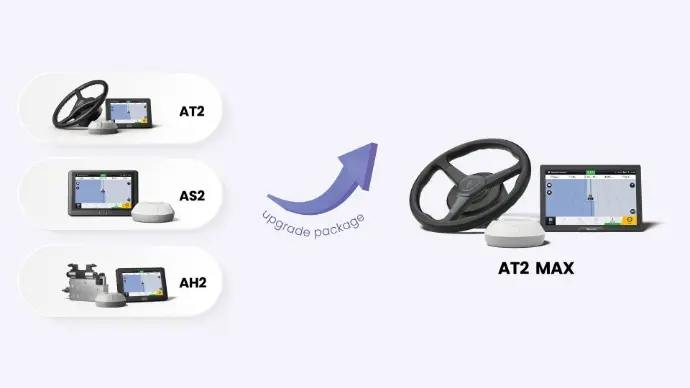Introduction
Sustainable agriculture practices focus on meeting the needs of the present without compromising the ability of future generations to meet their own needs. It combines environmental stewardship, economic profitability, and social equity to create a balanced and enduring system. As global challenges like climate change and resource scarcity intensify, adopting sustainable agriculture practices has become more critical than ever. This article will explore the 7 practices of sustainable agriculture that serve as a roadmap toward a sustainable agricultural future.
What is Sustainable Agriculture?
Sustainable agriculture is defined as an integrated system of plant and animal production practices that work in harmony with the natural environment. Its core principles include conserving resources, enhancing soil fertility, and promoting biodiversity. This approach benefits not only the environment but also the economy by ensuring long-term productivity and the well-being of farming communities.Globally, the importance of sustainable agriculture practices is growing. For instance, initiatives like the European Union’s Green Deal emphasize reducing chemical pesticide use and promoting organic farming. Similarly, the United Nations' Sustainable Development Goals (SDGs) highlight sustainable agriculture as key to ending hunger and combating climate change.
Why Sustainable Agriculture Matters
Sustainable agriculture practices are important because of their ability to address pressing global challenges.Climate change and environmental degradation threaten agricultural productivity, while population growth increases demand for food. Sustainable practices ensure food security by reducing waste, conserving resources, and enhancing resilience to climate variability.
Moreover, sustainable agriculture supports biodiversity by preserving ecosystems and promoting the coexistence of various plant and animal species. It also reduces reliance on non-renewable resources like fossil fuels, ensuring a more balanced use of natural assets.
The 7 Practices of Sustainable Agriculture
1. Crop Rotation
Crop rotation involves alternating crops in a specific sequence to improve soil health and reduce pests. For example, planting legumes like soybeans after cereal crops enriches the soil with nitrogen. This practice minimizes dependency on synthetic fertilizers, reduces erosion, and interrupts pest and disease cycles. Learn more about crop rotation from FAO.2. Cover Cropping
Cover crops, such as clover and rye, are planted during off-seasons to protect and enhance soil. They prevent erosion, improve water retention, and increase organic matter. By adding nutrients to the soil, cover cropping creates a fertile foundation for future harvests. Check out NRCS for guidance on cover cropping.
3. Agroforestry
Agroforestry integrates trees and shrubs with crops or livestock. This practice provides shade, reduces wind erosion, and enhances biodiversity. For example, combining fruit trees with vegetable farming can yield multiple products from the same land while improving ecosystem health. Explore agroforestry systems via ICRAF.4. Integrated Pest Management (IPM)
IPM emphasizes natural pest control methods, such as introducing beneficial insects or using biological pesticides. This reduces reliance on harmful chemicals, promoting safer food and a healthier environment. Farmers adopting IPM often see cost savings and improved crop quality. For practical IPM tips, visit EPA.5. Soil Management
Healthy soil is the cornerstone of sustainable agriculture. Techniques like composting and reduced tillage enhance soil structure and fertility. Composting recycles organic waste into nutrient-rich material, while reduced tillage minimizes soil disturbance, preserving its microbial ecosystem. Learn about soil management best practices from NRCS.6. Efficient Water Use

7.Renewable Energy Integration
Integrating renewable energy sources like solar panels, wind turbines, or bioenergy systems into farming reduces dependency on fossil fuels. For instance, FJDynamics’ FJD AT2 Auto Steer System incorporates precision technology that improves efficiency while supporting sustainable energy use.Challenges in Adopting Sustainable Practices
Adopting sustainable agriculture practices faces several challenges. Financial constraints often deter farmers from investing in advanced tools or systems. Additionally, a lack of knowledge or training can impede the implementation of sustainable techniques.Resistance to change and policy limitations further complicate adoption. For example, subsidies for conventional farming methods may discourage transitions to sustainable practices. However, success stories like community-led organic farming initiatives in India highlight how overcoming these barriers can lead to transformative results. Learn from real-world examples of FAO.
How Farmers Can Get Started with Sustainable Agriculture

Governments and communities also play a vital role in promoting sustainable agriculture practices. Providing subsidies for eco-friendly equipment or organizing workshops can help farmers transition smoothly. Tools like the FJD AT2 MAX Auto Steer System and the FJD Precision Agriculture Solution from FJDynamics offer practical, affordable ways to enhance sustainable farming practices.
Conclusion
Sustainable agriculture practices are essential for building a resilient and thriving agricultural sector. By adopting the 7 practices of sustainable agriculture, such as crop rotation, efficient water use, and renewable energy integration, farmers can address environmental and economic challenges effectively.Products like the FJD AT2 and FJD AT2 MAX Auto Steer Systems empower farmers to implement these practices precisely and easily. These practices enhance productivity and ensure the preservation of resources for future generations. Together, we can pave the way for a sustainable future in agriculture.
FAQs
What are the 3 pillars of sustainable agriculture?The three pillars are environmental stewardship, economic profitability, and social equity. These elements work together to create a balanced and enduring agricultural system.
Is sustainable farming cost-effective?
While initial investments may be higher, sustainable farming often leads to long-term cost savings through reduced resource use, improved yields, and lower dependency on chemical inputs.
How does sustainable agriculture benefit small farmers? Sustainable agriculture provides small farmers with tools to improve productivity, reduce costs, and enhance resilience to climate change. Practices like crop rotation and IPM are especially beneficial for small-scale operations.